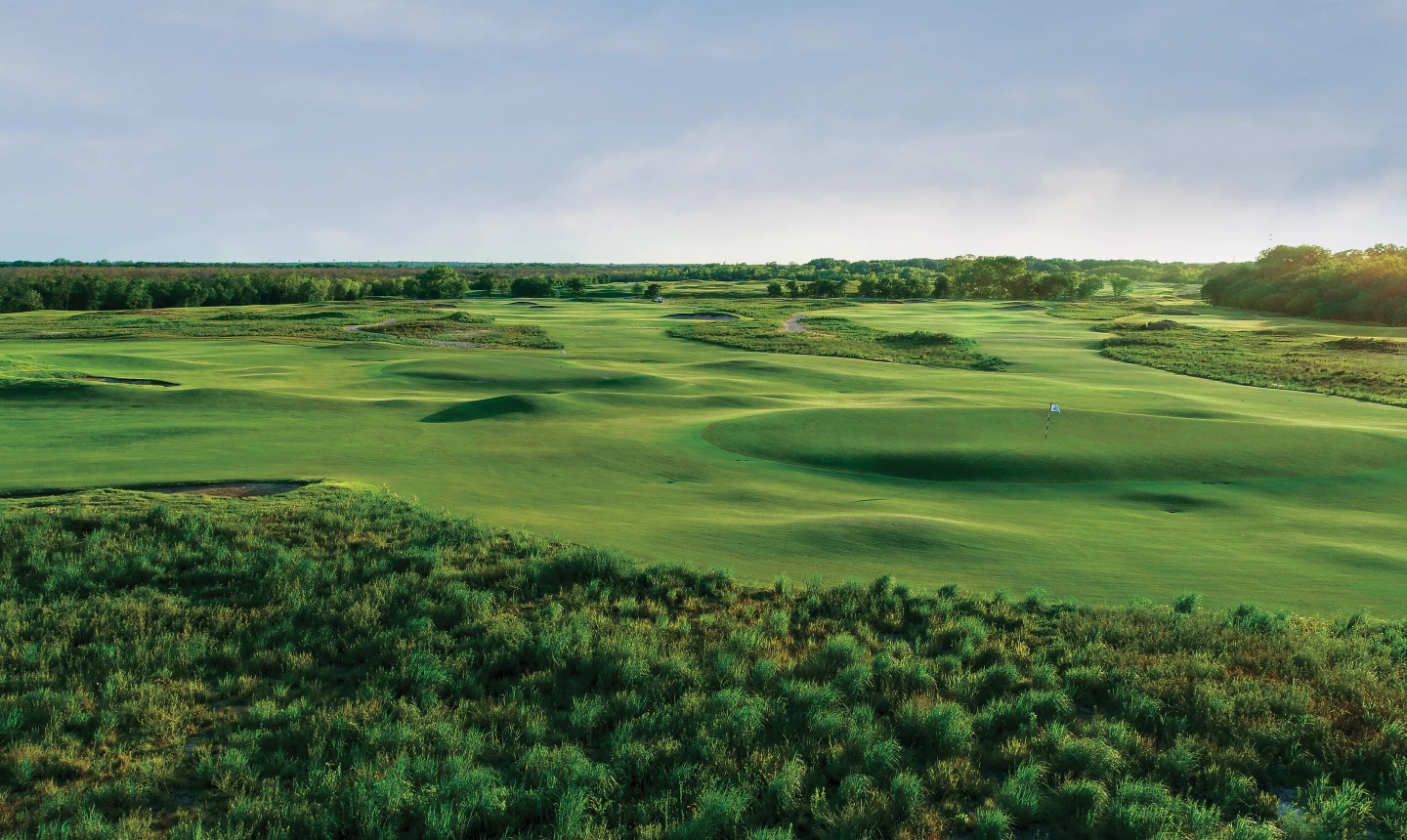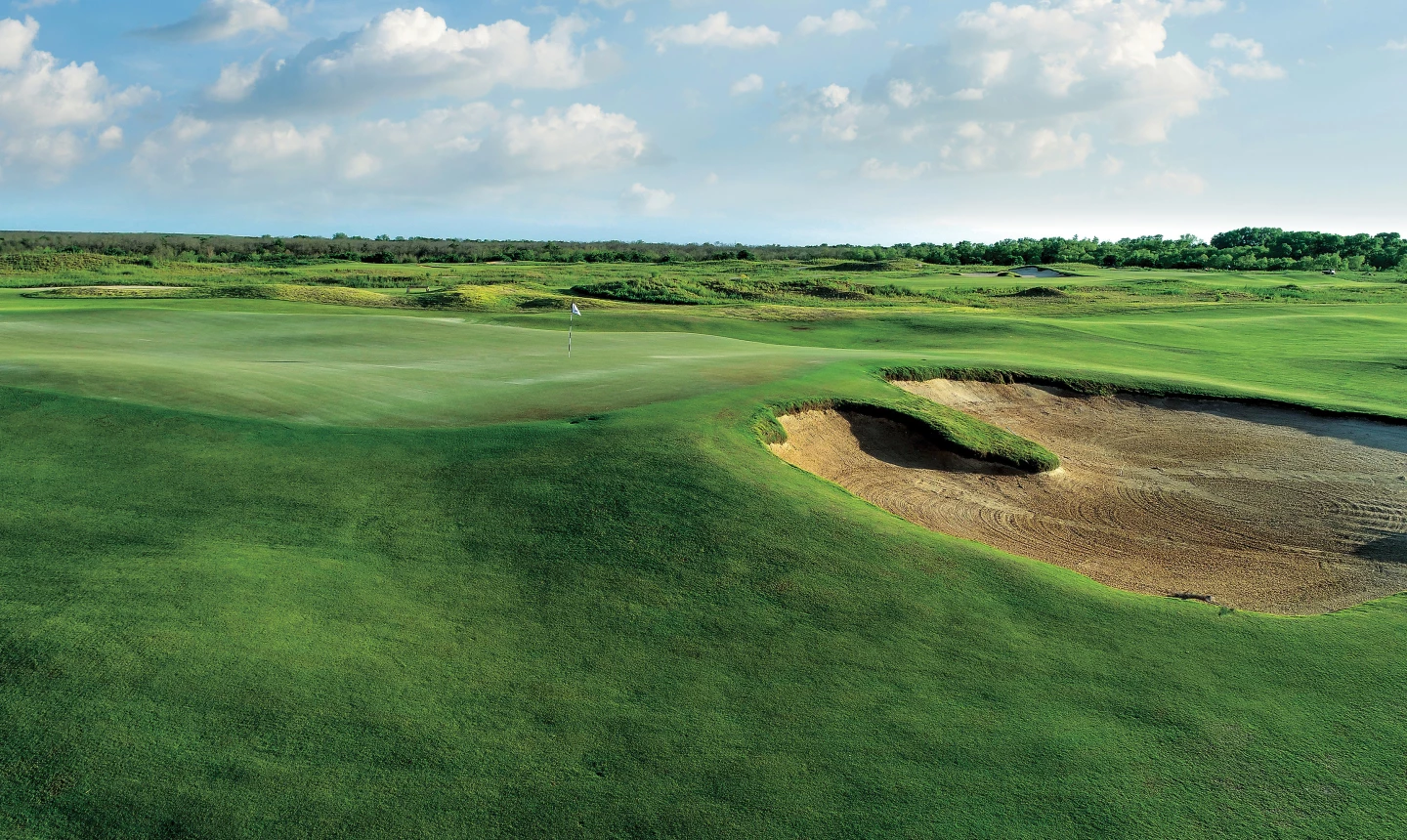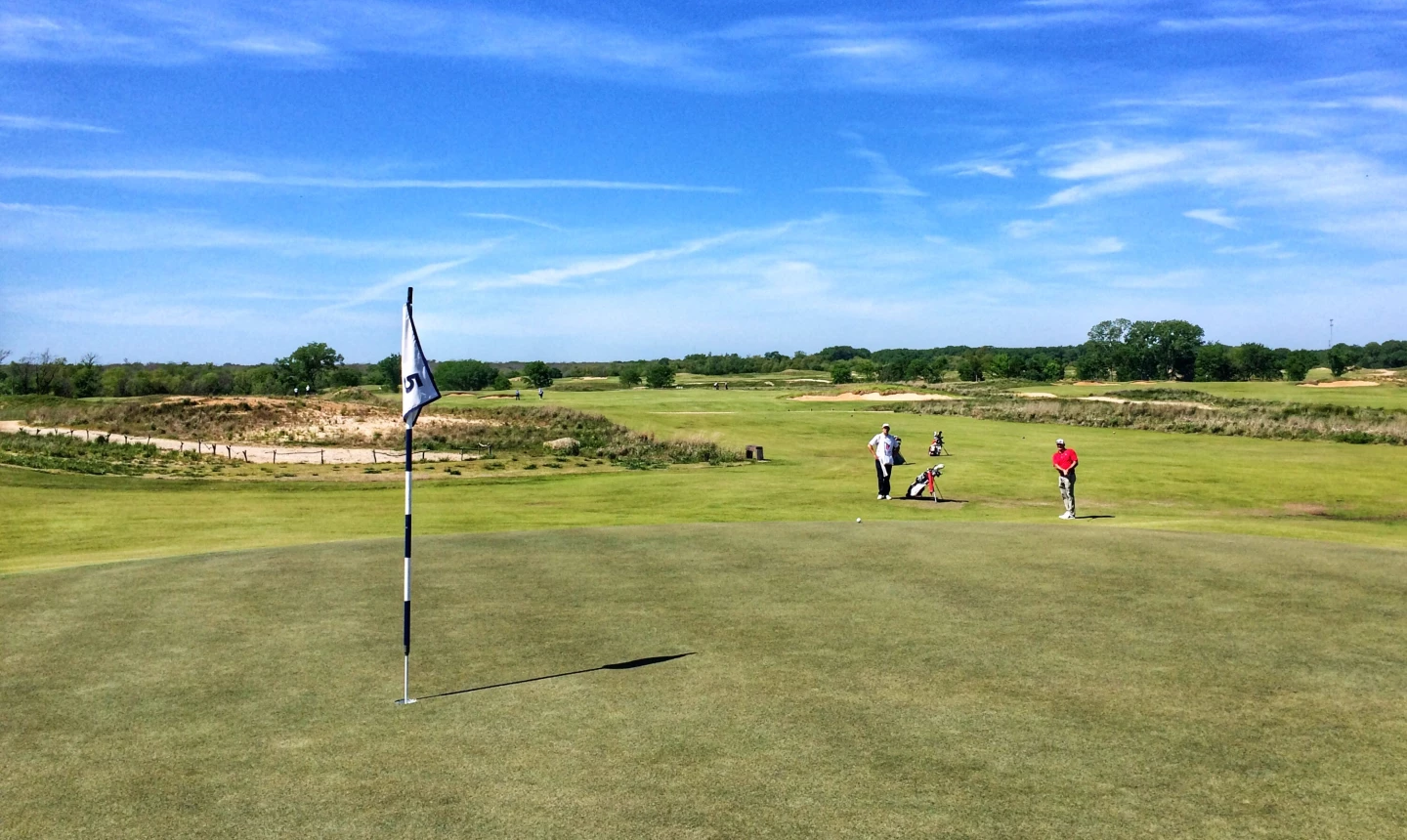DALLAS — While the TPC Four Seasons at Las Colinas has received mixed reviews over the years (the tournament also utilized the other course at the Four Seasons, Cottonwood Valley, for many years), the ever-evolving design, from architects Robert Trent Jones Jr., Jay Morrish, D.A. Weibring, Ben Crenshaw, Tom Watson and Lord Byron himself, was certainly traditional golf. It has a similar look to many venues on the PGA Tour.
But the new home of the Nelson starting in 2018, Trinity Forest, couldn't be more different. Not only is it totally unlike the TPC Four Seasons, it's unlike anything on tour. Not since the U.S. Open at Chambers Bay in 2015 have we seen anything that resembles this sort of a landscape in a PGA Tour event in the United States. But unlike Chambers Bay, the new Trinity Forest, carved out the environmentally sensitive Trinity Forest, is getting rave early reviews.

The par-3 11th hole.
Links-like is certainly an appropriate description
First off, forget a dozen water hazards, target greens and trees to negotiate. Without being a "true links" course, this is about as close as you can get. The design by Bill Coore and Ben Crenshaw with input from former PGA Tour player Harrison Frazar is certainly minimalist. Once they stripped off the vegetation that covered this former landfill, what remained was 400 acres of undulating terrain, 170 of which was used for this all-walking golf course.
"Basically, the property that we began with, the biggest attraction was that rumpled, uneven ground," Coore told the Dallas Morning News. "It looked like ground that needed to be ironed -- uneven, broken ground that anyone in our profession associates with the most classic courses in the world. Using the uneven ground, the greens look like parts of the fairways; the grass just swells up out of the ground. There is almost no rough."
In other words, the characteristics that most golfers would associate with links golf. Here, you hit and hit it again. There are some hazards to be sure, but for the most part, it's all about the angles, where the flagsticks are located on these large, sloping greens and how you want to get there. Every green gives you opportunities to putt, and in many cases, it's certainly the best option.
But what will be most interesting is seeing how the pros attack these greens, in the air or on the ground. It'll be a combination of both for most of them certainly, both in the short game and on approaches. In some cases, bouncing a long approach onto the green will certainly be useful since the zoysia fairways and surrounds are firm and fast.
Trinity Forest is about its character around the greens
As for the course, it isn't overly long – around 7,300 yards with a par of 71 (three par 5s instead of four), although it's certainly conceivable that the course could be lengthened. The longest hole is the par-5 14th at 592 yards; the shortest is the 138-yard par 3 eighth. Four holes play over gorges and there is very little tree trouble on the course.
The most interesting aspect of playing this golf course, though, is certainly the greens with tightly cropped surrounds. In many cases, you're better off missing a green than you are negotiating a long putt that might have three, four or five breaks in it. The chip or putt off the green can be simpler. Playing this course for the first time certainly puts a golfer at a disadvantage. Practice rounds before next year's Nelson will be paramount.
Of course, being new, the greens are firm (and will probably be prepped to remain that way), so even tour players will be thinking about where to land the ball to get it to release to the hole or use a backboard behind it or to the side of it. Again, this isn't cookie-cutter American golf; it requires imagination.
This is where Dallas-based PGA Tour players Jordan Spieth and Hunter Mahan are spending much of their practice time. In fact, Trinity Forest hired Spieth's swing coach, Cameron McCormick, as its director of instruction. And the club, which has an initiation fee reportedly at $150,000, isn't just interested in the PGA Tour event, but would like to play host to a USGA championship as well.
The course was open for preview play in late 2016 and continued to mature nicely through a mild winter and spring. A new clubhouse has been under construction and should be ready to go by this fall. In addition to the golf course, the property also has a world-class practice facility and academy, a planned short course and is home to the golf team from Southern Methodist University.





















